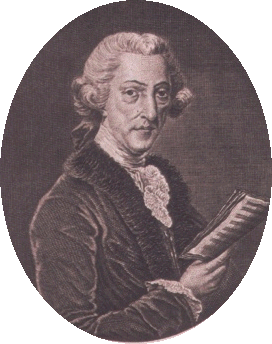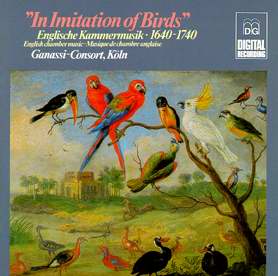|
 The
search for the pieces of music heard between ITV schools
programmes has occupied Richard
Elen off and on for 35 years. Now,
at last, he is the closest he has ever been to finding
them. The
search for the pieces of music heard between ITV schools
programmes has occupied Richard
Elen off and on for 35 years. Now,
at last, he is the closest he has ever been to finding
them.
One
of the things for which the Internet, despite its faults,
is to be praised is its ability to bring together people
scattered across the globe who share a common interest,
however obscure it may seem to be.
Thus it was with great surprise recently that I stumbled
across the collection of websites that forms transdiffusion.org
to find that not one but several hundred contributors
had had the same experience as me – an experience
that I had previous thought of as being unique.
Like
others who have written around this topic, there were
occasions during the mid-sixties when I was not well
enough to go to school and instead watched the Schools
programming on TV – and discovered Rediffusion’s
interlude music.
My parents, brother and two sisters had recently moved
from Coventry to a house in Richmond Road, Kingston-upon-Thames.
We had acquired what must have been our first, rented
television, with a seventeen-inch screen, on which I
had watched the first episode of Doctor Who.
But
at least as memorable were those ITV Schools Interludes,
broadcast by Associated Rediffusion in the mid-sixties.
They were more memorable than the programmes themselves,
certainly, and the music stuck with me. In fact it stuck
with me forever.
I
had always been interested in music, and by this time
I had sung in Coventry Cathedral Choir and was an avid
listener to the Third Programme and beyond – an
ancient general coverage receiver in my bedroom gave
me access to shortwave too. But among the TV test card
music, the offshore watery wireless stations, and my
sister’s Beatles records, somehow these pieces
stood out.
For
those who don’t remember them – and perhaps
for those who do – there were two Interludes,
played between the afternoon’s Schools programming.
Each consisted of a handful of pieces of music, followed
by a pause, and then a final piece (which was also played
just prior to the first of the three Schools programmes
of those days), during which the grey interlude caption
was replaced by a clock, counting down and disappearing
as the start of the next programme approached. You can
read more about them here
- on Jason Robertson's superb sub-TV
site.
All the tunes remained with me, but it was that last
piece that was always clearest in my mind. What was
it? I had to know. Listen
to it with an animation by David Jeffery here
(Real Player required). This, and other illustrations
and animations, can be found on sub-TV.
Before long, TV moved on, and I moved on, and not only
were those interludes no longer played, I was no longer
there to hear them. I went to college in nearby Twickenham
and then moved into communications and ultimately into
the recording industry. Ultimately, I became the studio
manager of a little recording studio in London’s
Denmark Street, owned by EMI Music, and named after
a music publishing company I’d never heard of
before: KPM – Keith Prowse Maurice. I started
working with composers whose names appear in Transdiffusion’s
various microsites – Johnny Pearson, Keith Mansfield
and Brian Bennett to name but three – and I discovered
Library Music and how much it had been a part of British
television’s history. I also discovered that KPM
had previously been owned by, of all people, Rediffusion.
That tune had never gone away. I tried humming it to
my boss at KPM, but he didn’t recognise it (his
predecessor, Robin Philips, might have been a better
bet, but he had gone on to found Bruton Music by then
and I never asked him). I found an extensive cache of
78s in the basement behind the studio from the days
of yore – Francis Day and Hunter’s erstwhile
music library – and while I found several pieces
from the test cards and other TV music of years gone
by (including Non Stop, by J. Malcolm and his orchestra,
then still the ITN theme, and I even got to edit the
piece of music used for News At Ten), That Piece never
came to light.
I’d always been interested in broadcasting, too,
and having sailed too close to the wind with the limitations
of British radio broadcasting in the early seventies,
I had ultimately gravitated towards amateur radio. By
now driving regularly between Croydon, where I was editing
the recording magazine Studio Sound, and West
Hampstead I was listening one day to the 2-metre VHF
repeater at Crystal Palace and caught the tail end of
a conversation in which I gathered that one of the participants
had formerly worked for Rediffusion. I called him back
as soon as I could and asked him if he knew the pieces
of music I remembered. Yes he did, he told me –
in fact it had been his job to put the discs on!
I
never knew his last name, and his first name has now
faded from memory. But he earned my undying gratitude
by sending me a cassette copy of the music in question
– plus several other things, including Rediffusion’s
1955-56 afternoon and evening start-up sequences.
He was also kind enough to list the pieces of music
used in the Interludes.
Here
is the list:
-
Schools Interlude – 1: Serious Doll,
A Wagon Passes, Merry Doll, Aubade; 5 seconds
silence; Arne. Listen
to it here (MP3 file).
-
Schools Interlude – 2: Dreaming, Busy-ness;
18th Century Suite; 5 seconds silence; Arne.
Listen
to it here.
The first four pieces in the first interlude,
and the first two in the second, were from Elgar’s
Nursery Suite. He transferred a copy of a ‘Music
For Pleasure’ LP of the suite – and
as soon as Chandos released a performance on CD,
I went and bought it.

Thomas Arne, 1710-1778
So
That Piece was by Arne – Thomas
Arne, 1710-1778 (see portrait, above),
the 18th Century British composer who is best known
today for writing Rule Britannia. But what
was That Piece called?
One
answer, at least, was a few years more in coming,
when one night I was listening to Classic FM and heard
a harpsichord playing That Tune. Suddenly glued to
the loudspeakers, I discovered that the tune was the
Allegro from Thomas Arne’s G Major Sonata
for Harpsichord. Here's
the last 35 seconds (from the D&G CD referenced
below - 275KB mp3): it is evidently the same tune.
But what I wanted was a small orchestral arrangement.

I
found an album that looked a likely candidate
(above):
In Imitation of Birds by the Ganassi Consort
of Cologne, on Dabringhaus
und Grimm Records, but it too featured solo harpsichord
only. And that was as far as I got.
Again, a few years went by. From time to time I would
ask friends, people who might know, musicologists,
classical recording engineers, but to no avail. And
then suddenly there was the internet. I started doing
searches and ultimately, up something came. There
were references to Arne, and to ITV Schools music…
in the same place! And also, here in the pages of
transdiffusion.org, was another name for it: Finale
from ‘A Dance Suite’.
Where does this name come from? Well, the Transdiffusion
archives contain a letter from Anthony Crouch, Associated-Rediffusion's
Head of Music, which provides it. It is possible that
the recording used on-air was specially made by Rediffusion
for their own use.
The
only trouble is, I can find absolutely nothing on
a piece by Arne called anything like A Dance Suite.
Is it perhaps a corruption of the name on my list
for the previous item in Interlude 2, the mysterious
18th Century Suite – a suite of five
short pieces for small chamber orchestra? That’s
another item I would dearly like to know more about.
Are they both by Arne?
Unless
the name is simply a rough label given by someone
at Rediffusion to the suite, probably not. The size
of the orchestra appears different – the "Arne"
has a fuller orchestration – and "18th
Century Suite" sounds like the name a modern
composer might give to something "in the style
of…" – perhaps even library music,
and in fact I had looked for it during my time at
KPM, with no success.
But at least I have copies of the original broadcast
performances, albeit on cassette, from the original
LP records, with the accompanying hiss and rumble
from which such recordings suffer. With the discovery
of transdiffusion.org and in particular sub-TV, I
decided that it was time to transfer the tape to digital
and clean it up.
And now I hope that, as a result, with some help from
this new audience I can finally solve the mystery
and track down That Piece once and for all. And the
"18th Century Suite", too. After 35 years,
I am surely the closest to finding out that I have
ever been.
|